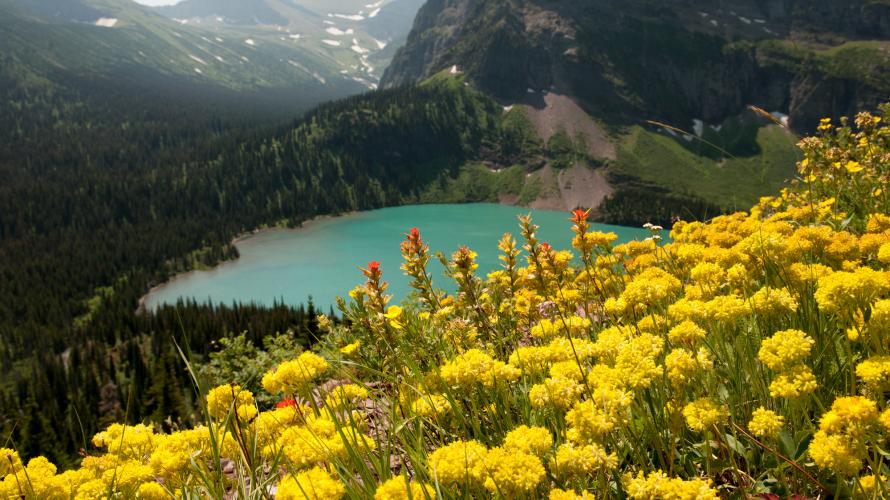

Jenna Caplette migrated from California to Montana in the early 1970s, first living on the Crow Indian reservation, then moving to Bozeman where she owned a downtown retail anchor for eighteen years. These days she owns Bozeman BodyTalk & Energetic Healthcare, hosts a monthly movie night, teaches and writes about many topics.
Photographing Montana wildflowers invites exploration of your own backyard & shared landscapes. Learn to notice, look, see & focus.
Find when flowers bloom in Montana with a Montana-specific wildflower guide like these three by Dr. Dee Strickler: Alpine Wildflowers, Prairie Wildflowers, and Forest Wildflowers. Online, visit: http://montana.plant-life.org. The menu on the left includes a link for Montana flowering times by month and by species. Click a plant name and you'll get a photograph of that plan with a description of its characteristics and a guide to where it grows. There are thirty flowers listed for April and over 100 in May. Remember that depending on the micro-climate, the same flower that would bloom in the lowlands in April, may just be poking through the green in a mountain meadow in late June.
As you plan which flowers to look for, be aware that photographing flowers has an ethic to it. Hauling your equipment through a field of rare flowers to find the best specimen can harm the field's ability to regenerate. Taking care not to alter habitat when cleaning up a scene is especially when photographing in the wild. Fashion wear when shooting flower close-ups? Tough, loose- fitting work clothing ease the scrapes of crawling around looking for a good shot.
When you find a flower you want to photograph, decide which aspects to document: the stamen, interior, or the edge of a petal. Those with fine patterns or complex structures demand a ground-level close-up. In general, you don’t want to shoot in direct, midday sun. Harsh sunlight creates deep shadows without detail and washes out the color. You can diffuse overhead sunlight by holding a white sheet or garbage bag over your subject.
Here’s a few more tips for composing your shot:
Resist centering your shot on the flower you want to capture. Include two or more flowers or a bud to make your photo more interesting and to support the main subject.
Get in close to your subject and then get closer. To get the focus you want, you may need to make small changes to camera position, especially with a point and shoot camera. Use the flower mode on your point and shoot.
Find distracting objects by looking through the viewfinder or on the LCD screen on the back of your camera and remove them. Be sure there are no objects in the back or foreground of the picture to compete for attention with your subject.
Use a tripod with legs that spread parallel, or nearly parallel to the ground, to simplify getting your camera into position. You can get tiny Joby tripods for point and shoots. Alternatively, large bean bags allow relatively easy positioning of your camera at ground level, and they’re cheap, stable and lightweight.
In damp weather, protect your camera with a cover like the Rainsleeve -- a simple plastic sleeve with a drawstring front, that come in a package of two for $6.95. Use one until it gets a hole in it, then break out a new one. The Rainsleeve fits lenses up to 7 inches in diameter and eighteen inches long (think telephoto), and it will work when you’re using a tripod. Keep them in your camera case. Because in the life of an outdoor photographer, weather happens.
The essential skill for photographing flowers is patience. Patience while you wait for a playful breeze to pass. Patience in either finding or creating the perfect lighting conditions. Patience with checking details of focus. The essential gift? You will see and experience flowers in ways you have never done before.
Learn more about Macro Photography at:
